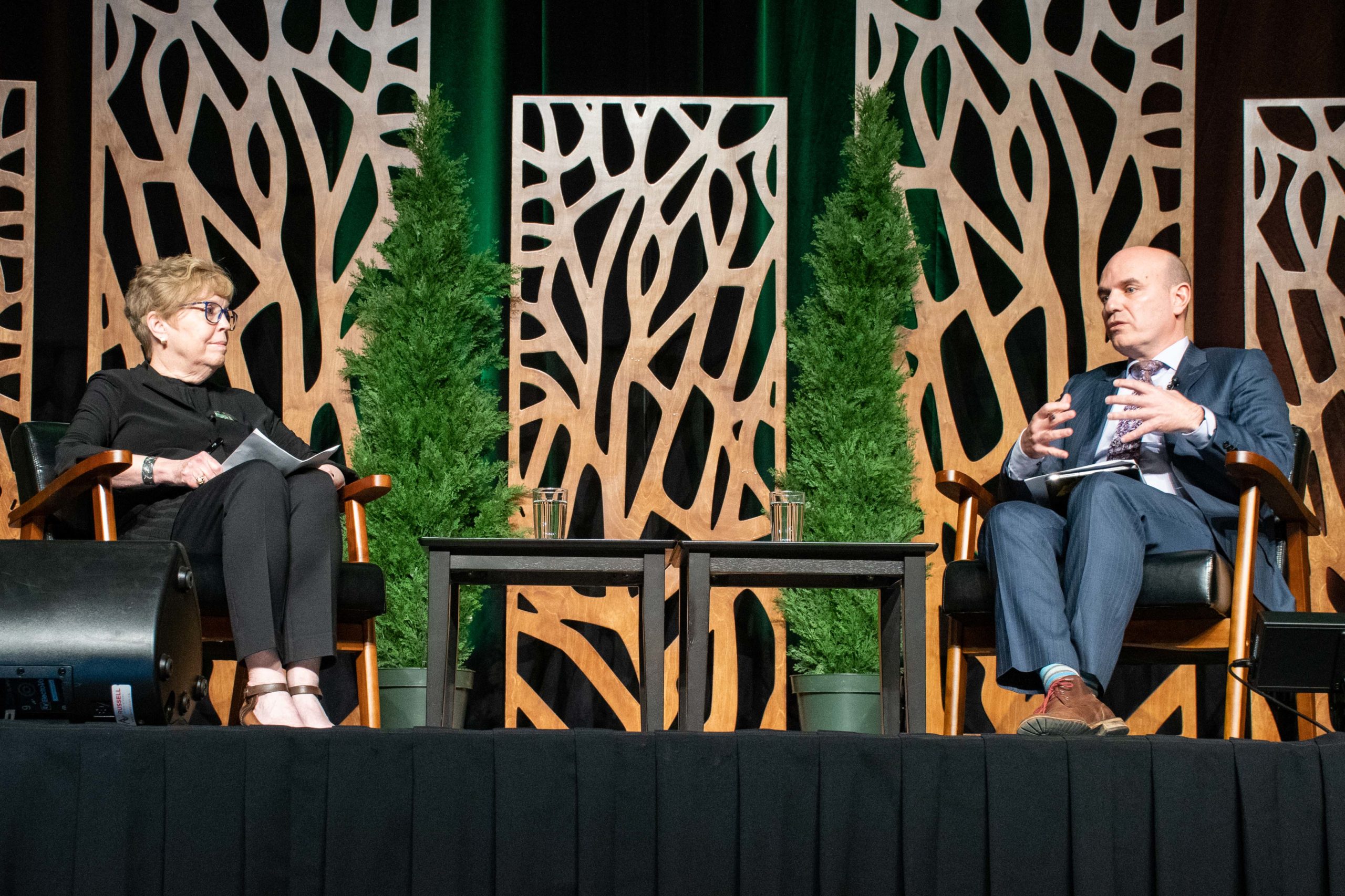 BC Minister of Forests Bruce Ralston, spoke on the need to transition to more resilient forests and to increase the value and values generated from them. In addition to more value-added manufactured products, Rolston said this includes the value of increased forest health, climate change, biodiversity, and wildfire resilience. Key to achieving this are the many government initiatives introduced over the past two years. Examples include increasing fibre recovery, forest rehabilitation after wildfires, sustainable logging practices, fibre distribution to small value-added producers, and the introduction of land use tables. In support of the latter, the Minister announced that the province is investing $38 million for province-wide LiDAR mapping over six years to develop high-resolution data critical to forestry, wildfire and fuels, surface hydrology, agriculture, ecology, wildlife, habitat management and restoration, geology and geomorphology. Although it may take a while to complete, Rolston said he was confident the forest landscape plans will provide more certainty on harvest levels, which in turn will generate more industry investments in the future.
BC Minister of Forests Bruce Ralston, spoke on the need to transition to more resilient forests and to increase the value and values generated from them. In addition to more value-added manufactured products, Rolston said this includes the value of increased forest health, climate change, biodiversity, and wildfire resilience. Key to achieving this are the many government initiatives introduced over the past two years. Examples include increasing fibre recovery, forest rehabilitation after wildfires, sustainable logging practices, fibre distribution to small value-added producers, and the introduction of land use tables. In support of the latter, the Minister announced that the province is investing $38 million for province-wide LiDAR mapping over six years to develop high-resolution data critical to forestry, wildfire and fuels, surface hydrology, agriculture, ecology, wildlife, habitat management and restoration, geology and geomorphology. Although it may take a while to complete, Rolston said he was confident the forest landscape plans will provide more certainty on harvest levels, which in turn will generate more industry investments in the future.
 BC Minister of Water, Land and Resource Stewardship Nathan Cullen, joined COFI president and CEO Linda Coady for an armchair dialogue on approaches to land use planning in BC. Coady introduced the session with an overview of the three key transitions underway: i) DRIPA implementation, ii) How We Plan – more comprehensive, inclusive, and area-based plans; and iii) What We Plan – ecosystem resilience and sustainable management. Coady noted industry’s support for the direction but uncertainty on “how we get there from here”. Minister Ralston noted that his ministry “was created to plan” and has done much of the heavy lifting upfront. DRIPA and the landscape level plans are key, and if done right, Cullen believes the desired certainty is achievable. Questioned on the concern of potential incremental AAC impacts of BC signing onto the recent Biodiversity Summit’s 30×30 goal (30% effective protection by 2030), Cullen said he believes it could be covered within the landscaped plans, adding it’s a “people up process, not a benevolent top down one”.
BC Minister of Water, Land and Resource Stewardship Nathan Cullen, joined COFI president and CEO Linda Coady for an armchair dialogue on approaches to land use planning in BC. Coady introduced the session with an overview of the three key transitions underway: i) DRIPA implementation, ii) How We Plan – more comprehensive, inclusive, and area-based plans; and iii) What We Plan – ecosystem resilience and sustainable management. Coady noted industry’s support for the direction but uncertainty on “how we get there from here”. Minister Ralston noted that his ministry “was created to plan” and has done much of the heavy lifting upfront. DRIPA and the landscape level plans are key, and if done right, Cullen believes the desired certainty is achievable. Questioned on the concern of potential incremental AAC impacts of BC signing onto the recent Biodiversity Summit’s 30×30 goal (30% effective protection by 2030), Cullen said he believes it could be covered within the landscaped plans, adding it’s a “people up process, not a benevolent top down one”.